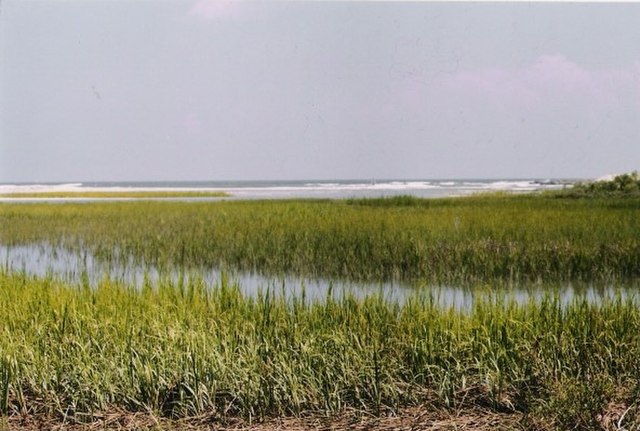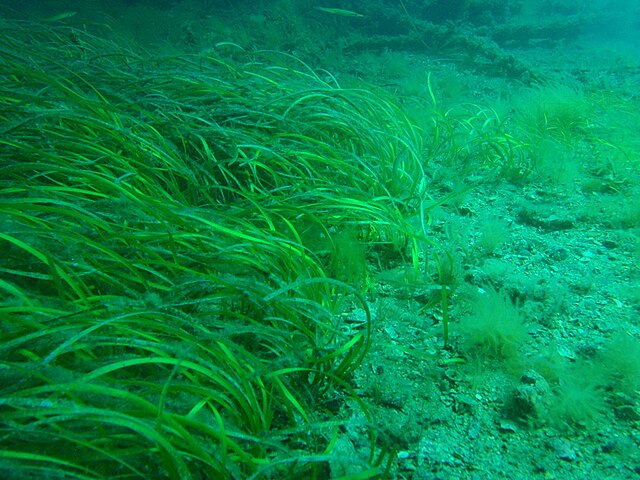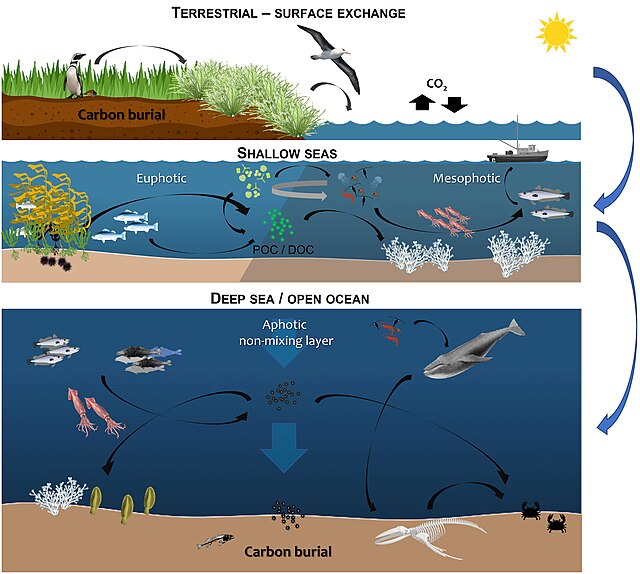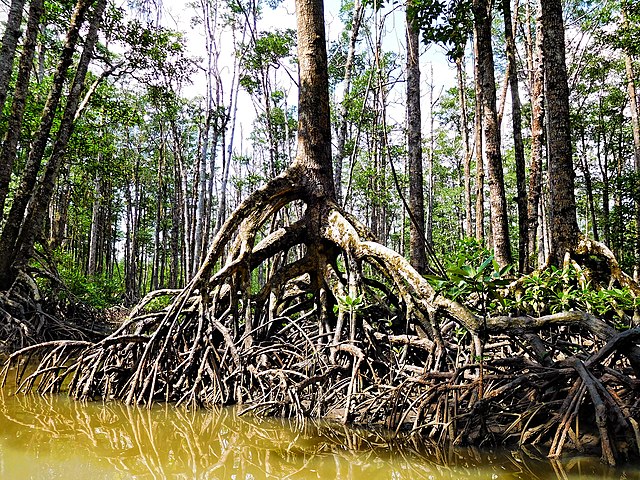Blue carbon is a concept within climate change mitigation that refers to "biologically driven carbon fluxes and storage in marine systems that are amenable to management." Most commonly, it refers to the role that tidal marshes, mangroves and seagrasses can play in carbon sequestration. These ecosystems can play an important role for climate change mitigation and ecosystem-based adaptation. However, when blue carbon ecosystems are degraded or lost they release carbon back to the atmosphere, thereby adding to greenhouse gas emissions.
Tidal marsh
Mangrove forest
Seagrass meadow
Blue Carbon at coastal, medium and deep ocean levels.
A mangrove is a shrub or tree that grows mainly in coastal saline or brackish water. Mangroves grow in an equatorial climate, typically along coastlines and tidal rivers. They have special adaptations to take in extra oxygen and to remove salt, which allow them to tolerate conditions that would kill most plants. The term is also used for tropical coastal vegetation consisting of such species. Mangroves are taxonomically diverse, as a result of convergent evolution in several plant families. They occur worldwide in the tropics and subtropics and even some temperate coastal areas, mainly between latitudes 30° N and 30° S, with the greatest mangrove area within 5° of the equator. Mangrove plant families first appeared during the Late Cretaceous to Paleocene epochs, and became widely distributed in part due to the movement of tectonic plates. The oldest known fossils of mangrove palm date to 75 million years ago.
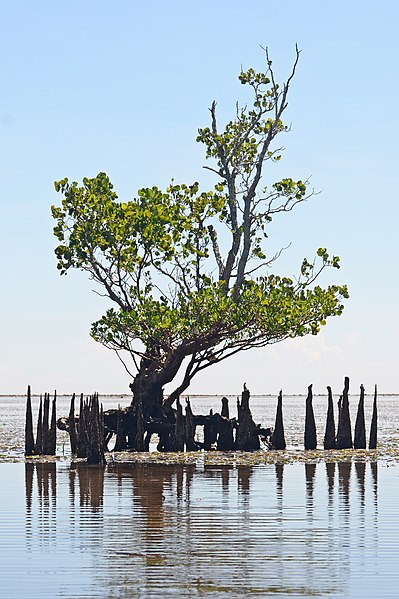
Mangroves are hardy shrubs and trees that thrive in salt water and have specialised adaptations so they can survive the volatile energies of intertidal zones along marine coasts.
(Acrostichum aureum) fern
Mangrove roots at low tide in the Philippines
Mangroves are adapted to saline conditions

